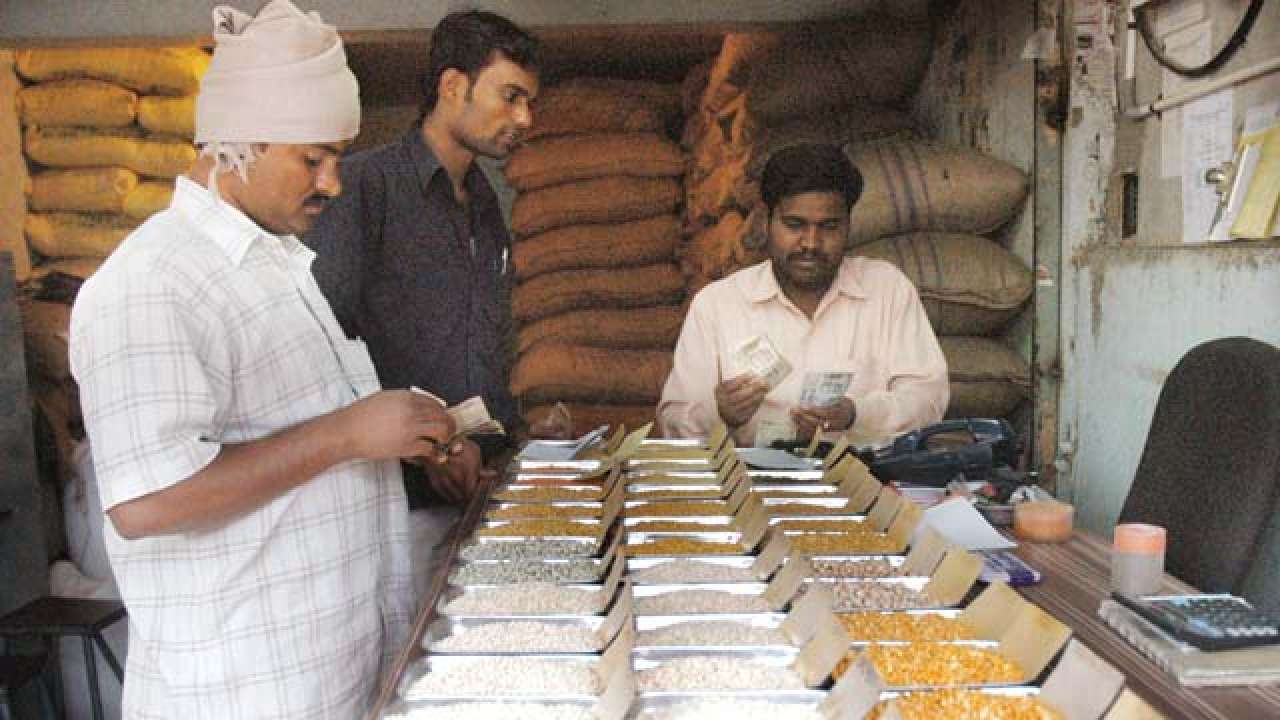
In the absence of any dedicated procurement of market produce, the promise of providing farmers with an assured Minimum Support Price (MSP) covering at least the production cost is turning out to be nothing more than a bi-annual ritual. Except for wheat and rice, and to some extent cotton, the announcement of a higher MSP (including bonus) for both the rabi and kharif seasons has simply become meaningless.
While the Centre has announced an increase of 6.4 per cent to 10.8 per cent in the MSP for crops grown in the forthcoming winter season, there is no assurance that the farmers will actually receive the prices that have been announced. If the past experience is any indication, farmers have not only failed to realise their cost of production but have invariably ended up selling their crop harvest at a much lower price, often a drop of 25 to 40 per cent on an average.
Let me illustrate. In Porbandar, Gujarat, the price of groundnut oscillated between a minimum of Rs 2,675 per quintal to a high of Rs 2,750 per quintal, with the modal price (which is the average price derived from a day’s sales) being Rs 2,710. These were the prices prevailing in the five-day period between October 17 and October 21. Two days later, on October 23, the groundnut price in Hanumangarh in Rajasthan was Rs 2,900 per quintal. While the modal price looks to be a much better price that the farmers have got, it actually is a distress price. Compare this with the MSP for groundnut at Rs 4,450 per quintal, and it becomes clear that farmers have in reality been forced to incur a net loss of Rs 1,740 per quintal.
In Rajasthan, the price of moong (green gram) on October 6 in Ajmer district mandis prevailed at a modal price of Rs 3,900 per quintal in the Beawar and Bijay Nagar markets. The same day, the modal price for moong was Rs 4,150 per quintal in the Madanganj and Kishanganj mandis. The modal price was approximately 25 per cent less than the MSP for moong. Against the MSP of Rs 5,575 per quintal, farmers’ earning was in the negative, a loss of more than Rs 1,600 per quintal on an average. Interestingly, the Commission for Agricultural Costs and Prices (CACP) admits that the moong MSP was fixed lower than its production cost that works out to Rs 5,700 per quintal. In Madhya Pradesh too, the market prices of urad, moong, and groundnut had prevailed low.
In September too, the prices had remained low. Let us compare the prices that prevailed on September 27 across the country’s mandis to get an idea of the price blow the farmers are subjected to. For soyabean, the modal prices in Harda and Mandsaur mandis in Madhya Pradesh prevailed at a low of Rs 2,660 and Rs 2,880 per quintal against the MSP (plus bonus) of Rs 3,050 per quintal, a loss of Rs 400 to Rs 500 on the sale of every quintal. For urad dal, against the MSP (and bonus) of Rs 5,400 per quintal, the price in Mandsaur in Madhya Pradesh was Rs 3,725; at Kota in Rajasthan at Rs 3,850; at Rs 4,180 in Bidar, Karnataka and Rs 4,410 at Akola in Maharashtra. The average loss urad farmers had to suffer across the country varied between Rs 1,000 to Rs 1,800 per quintal.
Given the huge losses that farmers have been incurring over the years, it has become crystal clear that the announcement of MSP neither helps in setting a floor price nor does it guarantee an assured price for farmers. The mandate for CACP, which works out the MSP for various crops, is not only to provide an assured price to farmers but also to ensure that it does not lead to inflationary pressures. The prices, therefore, are deliberately kept low, and in many cases are actually less than even the cost of production that the farmers have to entail. I have therefore maintained that when the farmers cultivate crops, what they don’t realise is they are in reality cultivating losses.
In any case, the high-level Shanta Kumar Committee had made it abundantly clear that only six per cent farmers get MSP since they are able to bring their produce to the mandis. Lack of logistics and adequate infrastructure has deprived the remaining 94 per cent farmers of even seeking a claim over MSP. After all, only those who bring their produce to the regulated mandis can get the benefit of MSP. This is primarily because there are only about 7,600 regulated APMC-regulated mandis in the country, which is awfully low. To ensure that a mandi is available within a 20-km radius, India needs a network of 42,000 mandis.
The economic priority, therefore, should be on making adequate investment in the construction of APMC market years. This assumes importance given the scale and magnitude of the agrarian distress that continues to prevail. Instead of deputing 50,000 party workers to convince farmers of the government’s intent behind doubling farmers income, the focus should urgently shift to setting up 42,000 market yards in the next five years. That’s where the answer lies.
The author is an agricultural policy analyst. Views expressed are personal.